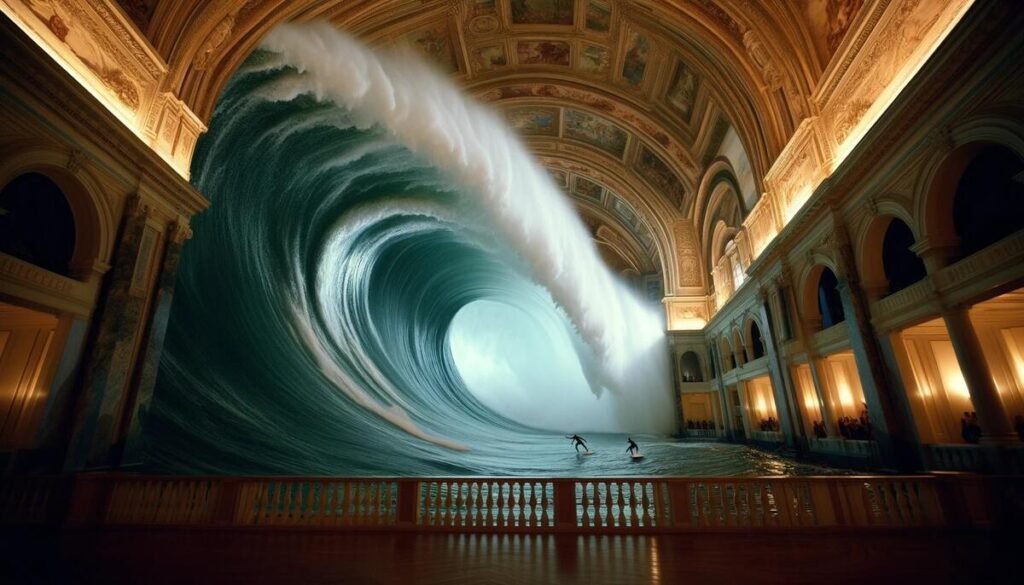Sora, OpenAI’s advanced AI model capable of generating realistic and imaginative videos from text prompts, heralds a new era of creativity and innovation across various fields. This model, with its ability to create scenes up to a minute long while maintaining high visual quality and adherence to users’ prompts, offers vast possibilities for creative professionals, educators, content creators, and even policymakers. Let’s explore some of the most exciting and creative applications of Sora, emphasizing its potential to revolutionize how we create, learn, and entertain.
1. Film and Animation Production
Sora’s ability to generate detailed and coherent videos from simple text prompts can significantly reduce the time and resources required for traditional film and animation production. Film makers and animators can use Sora to quickly prototype scenes or create entire short films, opening up new avenues for storytelling and visual experimentation. The model’s deep understanding of language and ability to interpret prompts accurately allows for the creation of complex scenes with multiple characters and specific types of motion, enhancing the narrative and visual richness of film and animation projects.
2. Digital Art and Design
Artists and designers can leverage Sora to bring their visions to life in dynamic ways previously unattainable without extensive animation skills. By providing text prompts, creatives can generate videos that express vibrant emotions and intricate details, serving as standalone pieces or inspirations for further artistic endeavors. Sora’s capabilities in generating multiple shots within a single video that persist characters and visual styles offer novel ways to explore digital storytelling and design concepts.
3. Education and Training
In educational contexts, Sora can be used to create engaging and informative content that illustrates complex concepts through dynamic visualizations. Whether for illustrating scientific phenomena, historical events, or abstract theories, Sora can help educators craft content that captivates students and enhances learning experiences. Furthermore, Sora’s videos can be used in training simulations for various professions, providing realistic scenarios for practice and assessment.
4. Advertising and Marketing
Marketing professionals can utilize Sora to create innovative and eye-catching ad campaigns. By generating videos that accurately follow creative briefs and capture the essence of a brand or product, Sora can offer a cost-effective and creative solution for producing promotional content. Its ability to simulate real-world interactions and generate photorealistic scenes can help marketers convey their messages in compelling and relatable ways.
5. Gaming and Virtual Reality
Sora’s video generation capabilities can enhance the development of video games and virtual reality experiences. Game developers can use Sora to create dynamic backgrounds, cutscenes, or even interactive elements that respond to textual commands, enriching the gaming environment and user experience. In virtual reality, Sora can be used to generate immersive environments that react and evolve based on user interactions, pushing the boundaries of what’s possible in virtual spaces.
6. Social Media and Content Creation
For social media influencers and content creators, Sora offers a tool to quickly produce unique and engaging content. Whether for storytelling, educational content, or entertainment, Sora can help creators stand out in a crowded space by enabling the production of high-quality videos that capture the imagination of their audience.
7. Scientific Visualization and Simulation
Researchers and scientists can use Sora to visualize complex data or simulate environmental and biological processes. By translating data and research findings into vivid, dynamic visualizations, Sora can aid in the communication of scientific research, making it more accessible to the public and facilitating collaboration across disciplines.
Safety and Ethical Considerations
While the creative applications of Sora are vast, it’s essential to address and mitigate potential risks, such as the creation of misleading content or the violation of intellectual property rights. OpenAI is actively working on safety measures, including the development of detection classifiers and the implementation of robust content policies, to ensure that Sora is used responsibly and ethically.
In conclusion, Sora’s ability to generate realistic and imaginative videos from text instructions opens up a world of creative possibilities across various domains. As we explore these applications, it’s crucial to navigate the ethical implications and strive for a future where technology like Sora enhances human creativity and understanding in responsible and beneficial ways.







